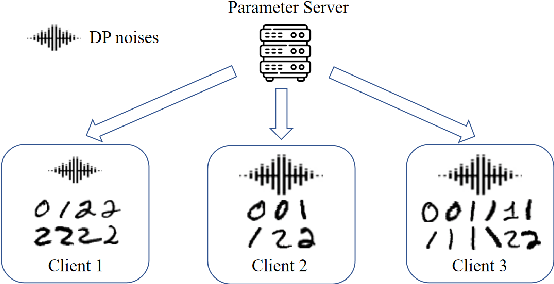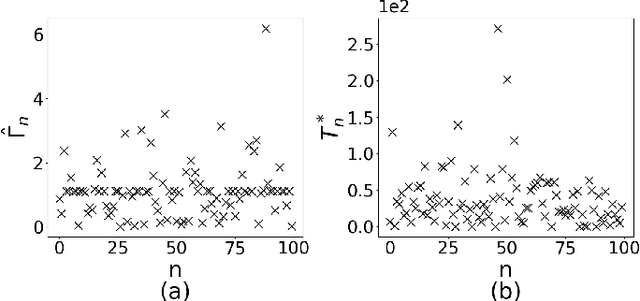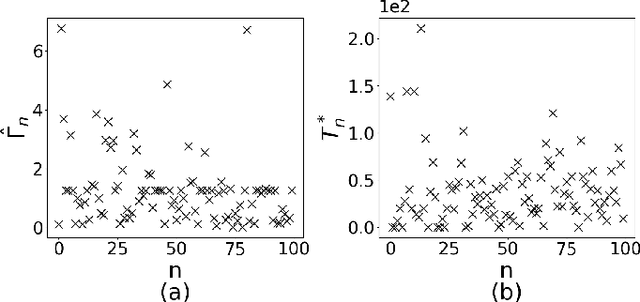Laizhong Cui
Beyond Empathy: Integrating Diagnostic and Therapeutic Reasoning with Large Language Models for Mental Health Counseling
May 21, 2025Abstract:Large language models (LLMs) hold significant potential for mental health support, capable of generating empathetic responses and simulating therapeutic conversations. However, existing LLM-based approaches often lack the clinical grounding necessary for real-world psychological counseling, particularly in explicit diagnostic reasoning aligned with standards like the DSM/ICD and incorporating diverse therapeutic modalities beyond basic empathy or single strategies. To address these critical limitations, we propose PsyLLM, the first large language model designed to systematically integrate both diagnostic and therapeutic reasoning for mental health counseling. To develop the PsyLLM, we propose a novel automated data synthesis pipeline. This pipeline processes real-world mental health posts, generates multi-turn dialogue structures, and leverages LLMs guided by international diagnostic standards (e.g., DSM/ICD) and multiple therapeutic frameworks (e.g., CBT, ACT, psychodynamic) to simulate detailed clinical reasoning processes. Rigorous multi-dimensional filtering ensures the generation of high-quality, clinically aligned dialogue data. In addition, we introduce a new benchmark and evaluation protocol, assessing counseling quality across four key dimensions: comprehensiveness, professionalism, authenticity, and safety. Our experiments demonstrate that PsyLLM significantly outperforms state-of-the-art baseline models on this benchmark.
EmoBench-M: Benchmarking Emotional Intelligence for Multimodal Large Language Models
Feb 06, 2025



Abstract:With the integration of Multimodal large language models (MLLMs) into robotic systems and various AI applications, embedding emotional intelligence (EI) capabilities into these models is essential for enabling robots to effectively address human emotional needs and interact seamlessly in real-world scenarios. Existing static, text-based, or text-image benchmarks overlook the multimodal complexities of real-world interactions and fail to capture the dynamic, multimodal nature of emotional expressions, making them inadequate for evaluating MLLMs' EI. Based on established psychological theories of EI, we build EmoBench-M, a novel benchmark designed to evaluate the EI capability of MLLMs across 13 valuation scenarios from three key dimensions: foundational emotion recognition, conversational emotion understanding, and socially complex emotion analysis. Evaluations of both open-source and closed-source MLLMs on EmoBench-M reveal a significant performance gap between them and humans, highlighting the need to further advance their EI capabilities. All benchmark resources, including code and datasets, are publicly available at https://emo-gml.github.io/.
Ister: Inverted Seasonal-Trend Decomposition Transformer for Explainable Multivariate Time Series Forecasting
Dec 25, 2024Abstract:In long-term time series forecasting, Transformer-based models have achieved great success, due to its ability to capture long-range dependencies. However, existing transformer-based methods face challenges in accurately identifying which variables play a pivotal role in the prediction process and tend to overemphasize noisy channels, thereby limiting the interpretability and practical effectiveness of the models. Besides, it faces scalability issues due to quadratic computational complexity of self-attention. In this paper, we propose a new model named Inverted Seasonal-Trend Decomposition Transformer (Ister), which addresses these challenges in long-term multivariate time series forecasting by designing an improved Transformer-based structure. Ister firstly decomposes original time series into seasonal and trend components. Then we propose a new Dot-attention mechanism to process the seasonal component, which improves both accuracy, computation complexity and interpretability. Upon completion of the training phase, it allows users to intuitively visualize the significance of each feature in the overall prediction. We conduct comprehensive experiments, and the results show that Ister achieves state-of-the-art (SOTA) performance on multiple datasets, surpassing existing models in long-term prediction tasks.
Cerberus: Efficient Inference with Adaptive Parallel Decoding and Sequential Knowledge Enhancement
Oct 17, 2024



Abstract:Large language models (LLMs) often face a bottleneck in inference speed due to their reliance on auto-regressive decoding. Recently, parallel decoding has shown significant promise in enhancing inference efficiency. However, we have identified two key issues with existing parallel decoding frameworks: (1) decoding heads fail to balance prediction accuracy and the parallelism of execution, and (2) parallel decoding is not a universal solution, as it can bring unnecessary overheads at some challenging decoding steps. To address these issues, we propose Cerberus, an adaptive parallel decoding framework introduces the gating mechanism to enable the LLMs to adaptively choose appropriate decoding approaches at each decoding step, along with introducing a new paradigm of decoding heads that introduce the sequential knowledge while maintaining execution parallelism. The experiment results demonstrate that the Cerberus can achieve up to 2.12x speed up compared to auto-regressive decoding, and outperforms one of the leading parallel decoding frameworks, Medusa, with a 10% - 30% increase in acceleration and superior generation quality.
Mitigating Noise Detriment in Differentially Private Federated Learning with Model Pre-training
Aug 18, 2024



Abstract:Pre-training exploits public datasets to pre-train an advanced machine learning model, so that the model can be easily tuned to adapt to various downstream tasks. Pre-training has been extensively explored to mitigate computation and communication resource consumption. Inspired by these advantages, we are the first to explore how model pre-training can mitigate noise detriment in differentially private federated learning (DPFL). DPFL is upgraded from federated learning (FL), the de-facto standard for privacy preservation when training the model across multiple clients owning private data. DPFL introduces differentially private (DP) noises to obfuscate model gradients exposed in FL, which however can considerably impair model accuracy. In our work, we compare head fine-tuning (HT) and full fine-tuning (FT), which are based on pre-training, with scratch training (ST) in DPFL through a comprehensive empirical study. Our experiments tune pre-trained models (obtained by pre-training on ImageNet-1K) with CIFAR-10, CHMNIST and Fashion-MNIST (FMNIST) datasets, respectively. The results demonstrate that HT and FT can significantly mitigate noise influence by diminishing gradient exposure times. In particular, HT outperforms FT when the privacy budget is tight or the model size is large. Visualization and explanation study further substantiates our findings. Our pioneering study introduces a new perspective on enhancing DPFL and expanding its practical applications.
The Power of Bias: Optimizing Client Selection in Federated Learning with Heterogeneous Differential Privacy
Aug 16, 2024



Abstract:To preserve the data privacy, the federated learning (FL) paradigm emerges in which clients only expose model gradients rather than original data for conducting model training. To enhance the protection of model gradients in FL, differentially private federated learning (DPFL) is proposed which incorporates differentially private (DP) noises to obfuscate gradients before they are exposed. Yet, an essential but largely overlooked problem in DPFL is the heterogeneity of clients' privacy requirement, which can vary significantly between clients and extremely complicates the client selection problem in DPFL. In other words, both the data quality and the influence of DP noises should be taken into account when selecting clients. To address this problem, we conduct convergence analysis of DPFL under heterogeneous privacy, a generic client selection strategy, popular DP mechanisms and convex loss. Based on convergence analysis, we formulate the client selection problem to minimize the value of loss function in DPFL with heterogeneous privacy, which is a convex optimization problem and can be solved efficiently. Accordingly, we propose the DPFL-BCS (biased client selection) algorithm. The extensive experiment results with real datasets under both convex and non-convex loss functions indicate that DPFL-BCS can remarkably improve model utility compared with the SOTA baselines.
Optimizing Mobile-Friendly Viewport Prediction for Live 360-Degree Video Streaming
Mar 05, 2024



Abstract:Viewport prediction is the crucial task for adaptive 360-degree video streaming, as the bitrate control algorithms usually require the knowledge of the user's viewing portions of the frames. Various methods are studied and adopted for viewport prediction from less accurate statistic tools to highly calibrated deep neural networks. Conventionally, it is difficult to implement sophisticated deep learning methods on mobile devices, which have limited computation capability. In this work, we propose an advanced learning-based viewport prediction approach and carefully design it to introduce minimal transmission and computation overhead for mobile terminals. We also propose a model-agnostic meta-learning (MAML) based saliency prediction network trainer, which provides a few-sample fast training solution to obtain the prediction model by utilizing the information from the past models. We further discuss how to integrate this mobile-friendly viewport prediction (MFVP) approach into a typical 360-degree video live streaming system by formulating and solving the bitrate adaptation problem. Extensive experiment results show that our prediction approach can work in real-time for live video streaming and can achieve higher accuracies compared to other existing prediction methods on mobile end, which, together with our bitrate adaptation algorithm, significantly improves the streaming QoE from various aspects. We observe the accuracy of MFVP is 8.1$\%$ to 28.7$\%$ higher than other algorithms and achieves 3.73$\%$ to 14.96$\%$ higher average quality level and 49.6$\%$ to 74.97$\%$ less quality level change than other algorithms.
Expediting In-Network Federated Learning by Voting-Based Consensus Model Compression
Feb 06, 2024



Abstract:Recently, federated learning (FL) has gained momentum because of its capability in preserving data privacy. To conduct model training by FL, multiple clients exchange model updates with a parameter server via Internet. To accelerate the communication speed, it has been explored to deploy a programmable switch (PS) in lieu of the parameter server to coordinate clients. The challenge to deploy the PS in FL lies in its scarce memory space, prohibiting running memory consuming aggregation algorithms on the PS. To overcome this challenge, we propose Federated Learning in-network Aggregation with Compression (FediAC) algorithm, consisting of two phases: client voting and model aggregating. In the former phase, clients report their significant model update indices to the PS to estimate global significant model updates. In the latter phase, clients upload global significant model updates to the PS for aggregation. FediAC consumes much less memory space and communication traffic than existing works because the first phase can guarantee consensus compression across clients. The PS easily aligns model update indices to swiftly complete aggregation in the second phase. Finally, we conduct extensive experiments by using public datasets to demonstrate that FediAC remarkably surpasses the state-of-the-art baselines in terms of model accuracy and communication traffic.
Fed-CVLC: Compressing Federated Learning Communications with Variable-Length Codes
Feb 06, 2024



Abstract:In Federated Learning (FL) paradigm, a parameter server (PS) concurrently communicates with distributed participating clients for model collection, update aggregation, and model distribution over multiple rounds, without touching private data owned by individual clients. FL is appealing in preserving data privacy; yet the communication between the PS and scattered clients can be a severe bottleneck. Model compression algorithms, such as quantization and sparsification, have been suggested but they generally assume a fixed code length, which does not reflect the heterogeneity and variability of model updates. In this paper, through both analysis and experiments, we show strong evidences that variable-length is beneficial for compression in FL. We accordingly present Fed-CVLC (Federated Learning Compression with Variable-Length Codes), which fine-tunes the code length in response of the dynamics of model updates. We develop optimal tuning strategy that minimizes the loss function (equivalent to maximizing the model utility) subject to the budget for communication. We further demonstrate that Fed-CVLC is indeed a general compression design that bridges quantization and sparsification, with greater flexibility. Extensive experiments have been conducted with public datasets to demonstrate that Fed-CVLC remarkably outperforms state-of-the-art baselines, improving model utility by 1.50%-5.44%, or shrinking communication traffic by 16.67%-41.61%.
DAGC: Data-Volume-Aware Adaptive Sparsification Gradient Compression for Distributed Machine Learning in Mobile Computing
Nov 13, 2023



Abstract:Distributed machine learning (DML) in mobile environments faces significant communication bottlenecks. Gradient compression has emerged as an effective solution to this issue, offering substantial benefits in environments with limited bandwidth and metered data. Yet, they encounter severe performance drop in non-IID environments due to a one-size-fits-all compression approach, which does not account for the varying data volumes across workers. Assigning varying compression ratios to workers with distinct data distributions and volumes is thus a promising solution. This study introduces an analysis of distributed SGD with non-uniform compression, which reveals that the convergence rate (indicative of the iterations needed to achieve a certain accuracy) is influenced by compression ratios applied to workers with differing volumes. Accordingly, we frame relative compression ratio assignment as an $n$-variables chi-square nonlinear optimization problem, constrained by a fixed and limited communication budget. We propose DAGC-R, which assigns the worker handling larger data volumes the conservative compression. Recognizing the computational limitations of mobile devices, we DAGC-A, which are computationally less demanding and enhances the robustness of the absolute gradient compressor in non-IID scenarios. Our experiments confirm that both the DAGC-A and DAGC-R can achieve better performance when dealing with highly imbalanced data volume distribution and restricted communication.
 Add to Chrome
Add to Chrome Add to Firefox
Add to Firefox Add to Edge
Add to Edge